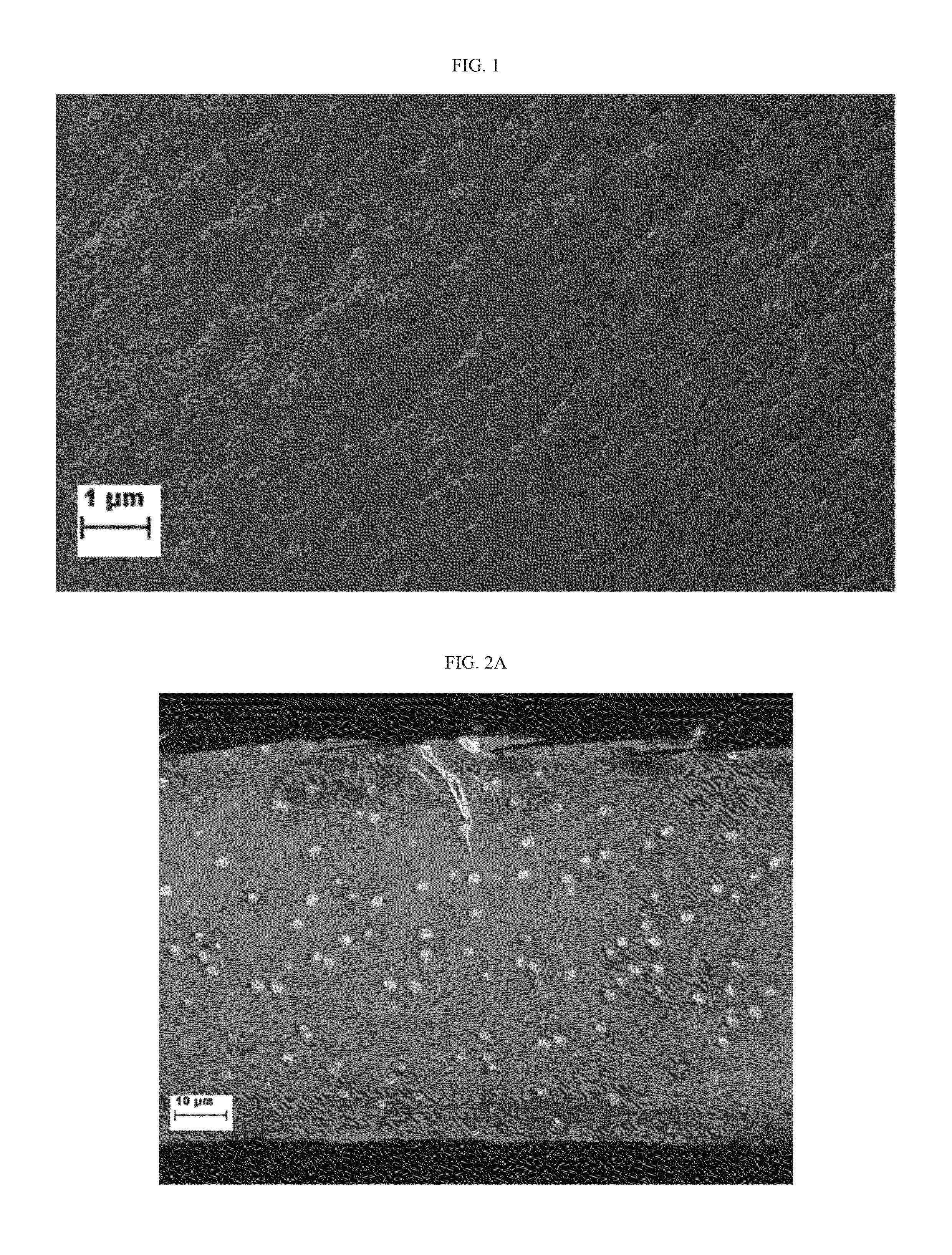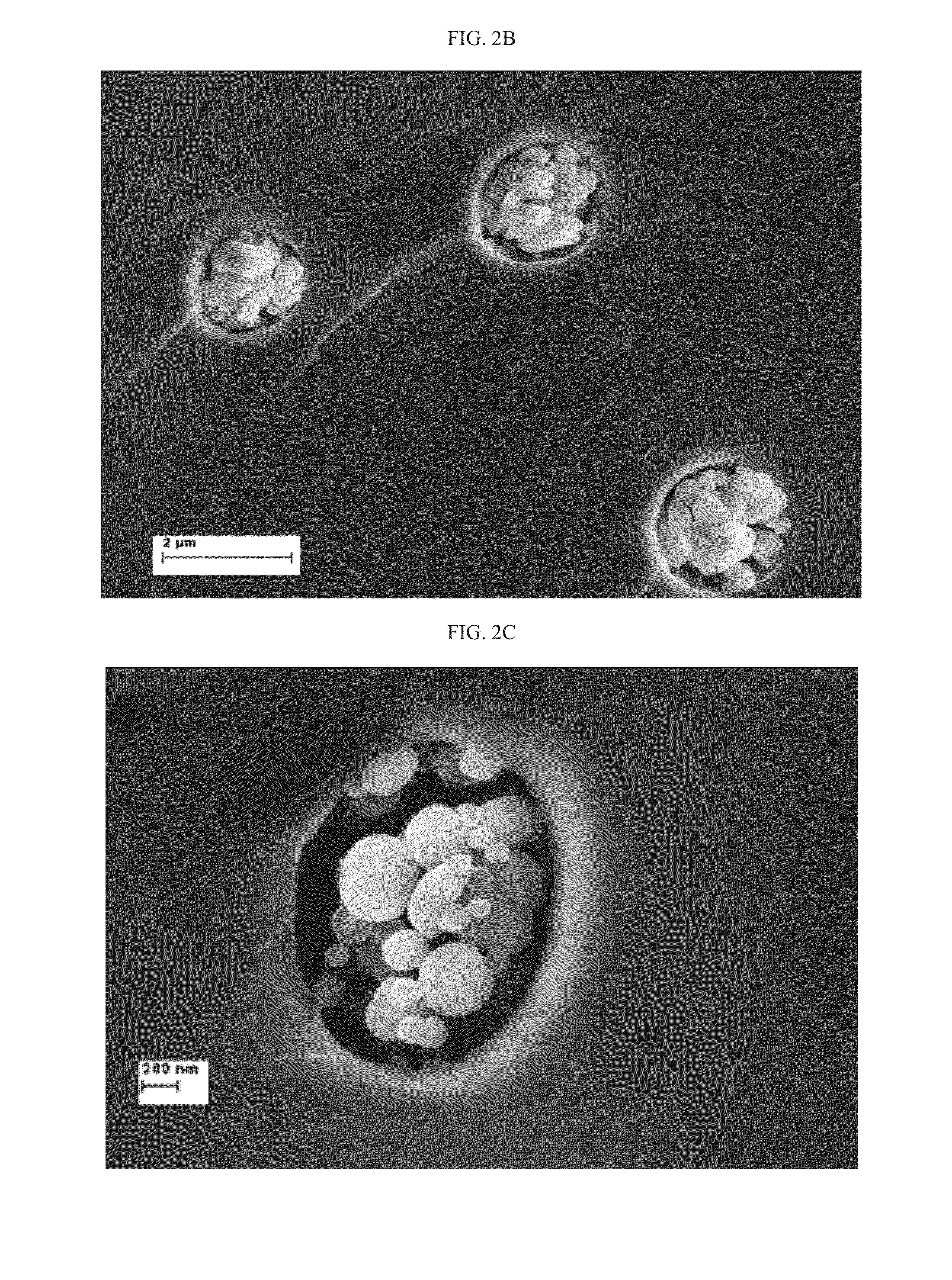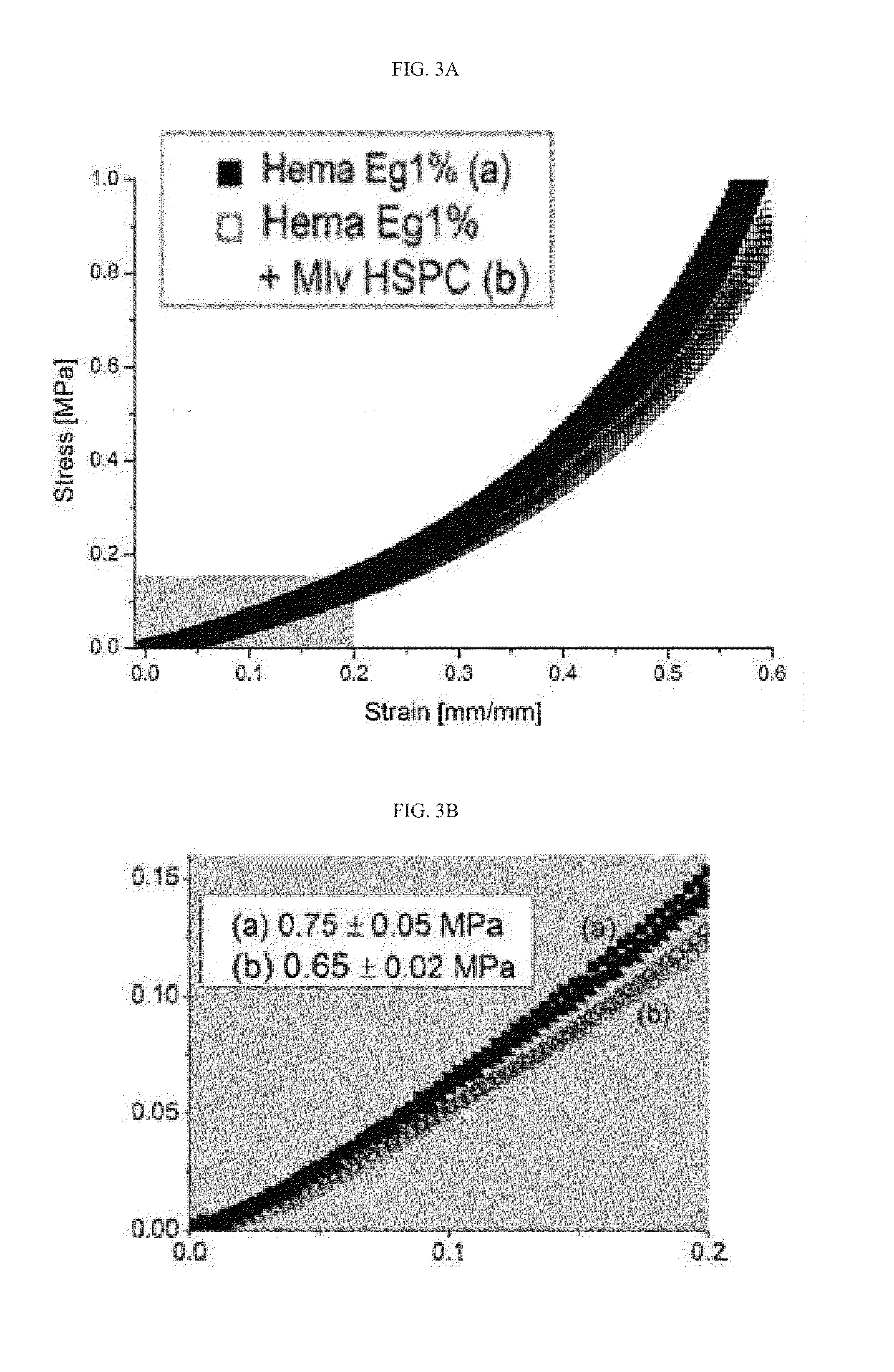Low friction hydrogels and hydrogel-containing composite materials
a hydrogel and composite material technology, applied in the field of material science, can solve the problems of difficult lubrication in aqueous media, high friction coefficient of surfaces or surface coatings in water, and difficult lubrication in aqueous and biological media, etc., and achieve low friction coefficient, reduce friction coefficient, and reduce the friction coefficient
- Summary
- Abstract
- Description
- Claims
- Application Information
AI Technical Summary
Benefits of technology
Problems solved by technology
Method used
Image
Examples
example 1
Materials and Methods
[0306]Materials:
[0307]Water used in the experiments was purified using a Barnsted NanoPure systems to 18.2 MΩ cm resistance with total organic content levels of less than about 1 ppb.
[0308]All phosphatidylcholines lipids (PCs) were purchased from Lipoid, GmbH, and are listed in Table 1.
TABLE 1Phase transitiontemperatureAcronymFull chemical nameMW(Tm), ° C.DLPC1,2-dilauroyl-sn-glycero-3-622−1phosphocholineDMPC1,2-dimyristoyl-sn-glycero-3-677.923.2phosphocholineDPPC1,2-dipalmitoyl-sn-glycero-3-734.141.4phosphocholineHSPChydrogenated soybean762.152.5phosphocholineDSPC1,2-distearoyl-sn-glycero-3-790.155phosphocholine
[0309]2-hydroxyethylmethacrylate (2-hydroxyethyl 2-methylprop-2-enoate, also referred to herein as hydroxyethylmethacrylate or HEMA); ethylene glycol dimethacrylate, also referred to herein as 1,2-ethanediol dimethacrylate, ethylene dimethacrylate, ethane-1,2-diyl bis(2-methylacrylate) or EGDMA); ammonium persulfate (APS); N,N,N′,N′-tetramethylethylenedi...
example 2
Product Characterization
[0325]Cryo-SEM Freeze Fracture Imaging:
[0326]Fresh hydrogel disc sample were flash-frozen (cryofixation), then fractured while maintained the sample at cryogenic (liquid nitrogen) temperature. Ice was removed by sublimation when formed on the cold fractured surface by increasing the temperature to about −100° C. for several minutes.
[0327]FIG. 1 presents an electro-micrograph of a fractured sample of a HEMA 9EGDMA 4% neat hydrogel (without liposomes).
[0328]As can be seen in FIG. 1, the neat hydrogel show a feature-less structure of the hydrogel, with marks of the fracture process.
[0329]FIGS. 2A-C present electro-micrographs of a fractured sample of HEMA 9EGDMA 4% SUV DMPC hydrogel containing liposomes, taken at a magnification of 2000 (FIG. 2A), a magnification of 24,000 (FIG. 2B) and a magnification of 60,000 (FIG. 2C).
[0330]As can be seen in FIG. 2, images of the liposome-containing hydrogel samples show a notable organization of the liposomes inside the bul...
example 3
Gel-to-Gel Friction Measurements
[0347]Gel-to-gel friction tests were carried out using a CETR© tribometer, UMT model with a two sensors, one for loads in the range of 5-1000 g, and another one which enables application of high normal loads, in the range of 1-40 Kg. The set-up configuration was of a hydrogel on a hydrogel, in which both upper and lower samples are immersed in pure water. The pressure between the two samples was calculated according to the smaller surface, which was the upper hydrogel sample having a diameter of 5 mm. The hydrogel samples were subjected to relative sliding over a wide range of loads using two different sensors: sensor 1 applying loads of 10 to 500 grams and sensor 2 applying high loads of 1 to 4 Kg, whereas the high loads sensor simulated physiological joint pressures of 0.73±0.1 MPa to 8.75±1.25 MPa.
[0348]The testing parameters were as follows: Sliding velocity of 1 mm / sec, sliding amplitude of 1 mm and dwell time of 5 sec at each normal load before ...
PUM
| Property | Measurement | Unit |
|---|---|---|
| shear storage modulus | aaaaa | aaaaa |
| diameter | aaaaa | aaaaa |
| pressure | aaaaa | aaaaa |
Abstract
Description
Claims
Application Information
 Login to View More
Login to View More - R&D
- Intellectual Property
- Life Sciences
- Materials
- Tech Scout
- Unparalleled Data Quality
- Higher Quality Content
- 60% Fewer Hallucinations
Browse by: Latest US Patents, China's latest patents, Technical Efficacy Thesaurus, Application Domain, Technology Topic, Popular Technical Reports.
© 2025 PatSnap. All rights reserved.Legal|Privacy policy|Modern Slavery Act Transparency Statement|Sitemap|About US| Contact US: help@patsnap.com



